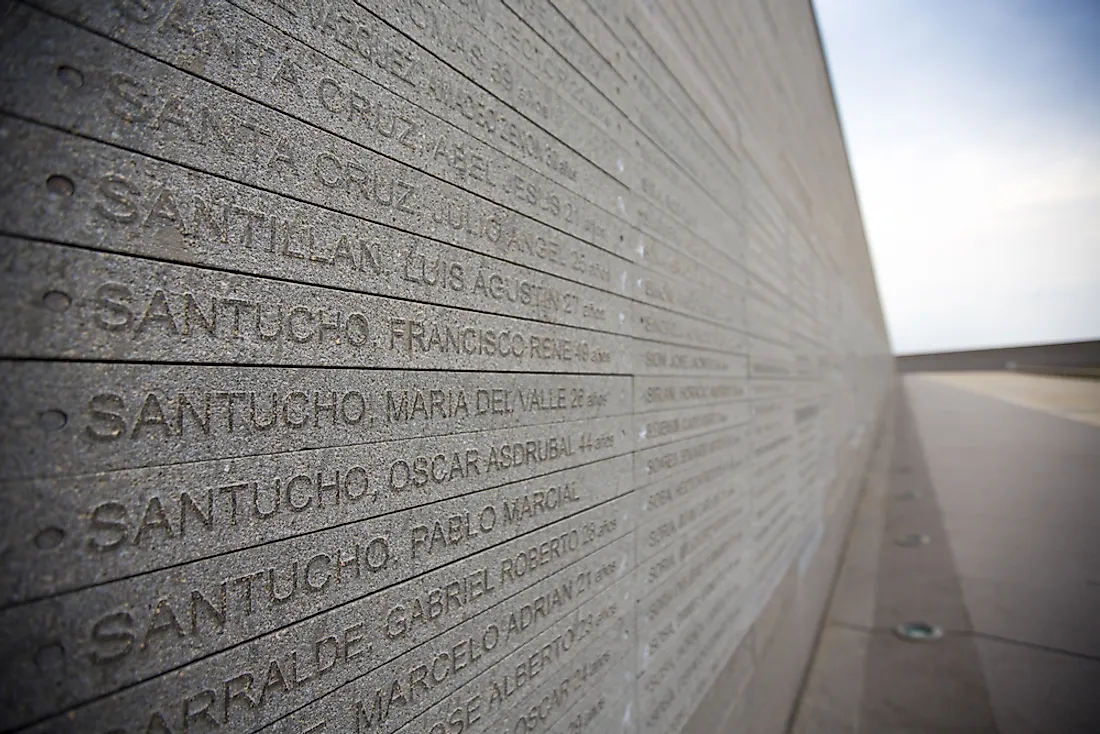What Was the Dirty War?

The Dirty War was the Argentinian Military government campaign against communist and leftist guerrillas and their supporters in Argentina in the 1970s and 80s.. The use of dirty tactics by the military government led by Videla has led to the term ‘dirty war’. Thousands of people are believed to have died in the state-sponsored campaign of terror that involved government militias who worked together in a crackdown on the communists.
Political Turmoil
Argentina was in a state of political turmoil after the ouster of President Juan Peron in 1955. President Peron was a popular leader who had made reforms that were popular with the masses. The military established its rule and abolished most of President Peron’s reforms. Groups sympathetic to Peron began to resist the military rule. The Argentinian military defeated these groups despite the support from leftist governments like Cuba and Bolivia. Though democratic rule was reestablished, attacks against high ranking military officers and other civilian targets continued as well as the retaliation from the Argentinian Military. President Juan Peron returned from exile in Spain and resumed power in 1974 but he was largely ineffective due to his illness and he passed away later that year and his wife Isabel Peron took over. The military soon toppled Isabel’s government in1976 despite her support for military action against the leftist movements that were terrorizing the country with attacks on military and police installations. The military junta was led by Jorge Rafael Videla from 1976 to 1981, then Roberto Viola and Leopoldo Galtieri until 1983 when the junta fell after the disastrous military campaign of the Falklands.
The Dirty War
The Argentinian military Junta began operations to restore order in the country immediately after the overthrow of President Isabel Peron’s government. Together with militias allied to the government, they began targeting the leftist movements, their fighting men, leaders, and supporters. Military operations had defeated the leftist militias but the order was not yet achieved. Kidnappings and arrests of alleged leftist sympathizers by the military government and its militia were done on a daily basis. Targets included writers, students, professors, trade unionists, and other supporters. Torture and summary executions were among the tactics employed in this dirty war and even false flag operations to give justifications for the expansion of this operations.
Foreign Support
The dirty war had foreign backers notably the United States which gave military aid in the pretext of fighting communism. The leftists were supported by the Cubans via their embassy which was used to maintain communication with the leftist rebels. Support for the military government began to wane after news reports of its excesses went international and sanctions were imposed on the government. Despite hosting and winning the world cup, the military government was faced with economic problems as a result of the sanctions. The defeat at Falklands led to the collapse of the military government.
Casualties and Aftermath
Raul Alfonsin was elected in 1983 when democracy was restored in Argentina. President Raul started a commission that investigated the crimes committed during the dirty war. The report estimated that 8353 Argentinians had disappeared or were killed during the dirty war. New discoveries have put the figure at 30,000 and Amnesty quotes its figure at 15,000. The junta members were tried and convicted by the government, given amnesty by later Presidents through Acts of Congress that pardoned the dirty war acts. These acts have been ruled unconstitutional by Argentinian courts and new convictions issued. Some of the Junta members have since died.











